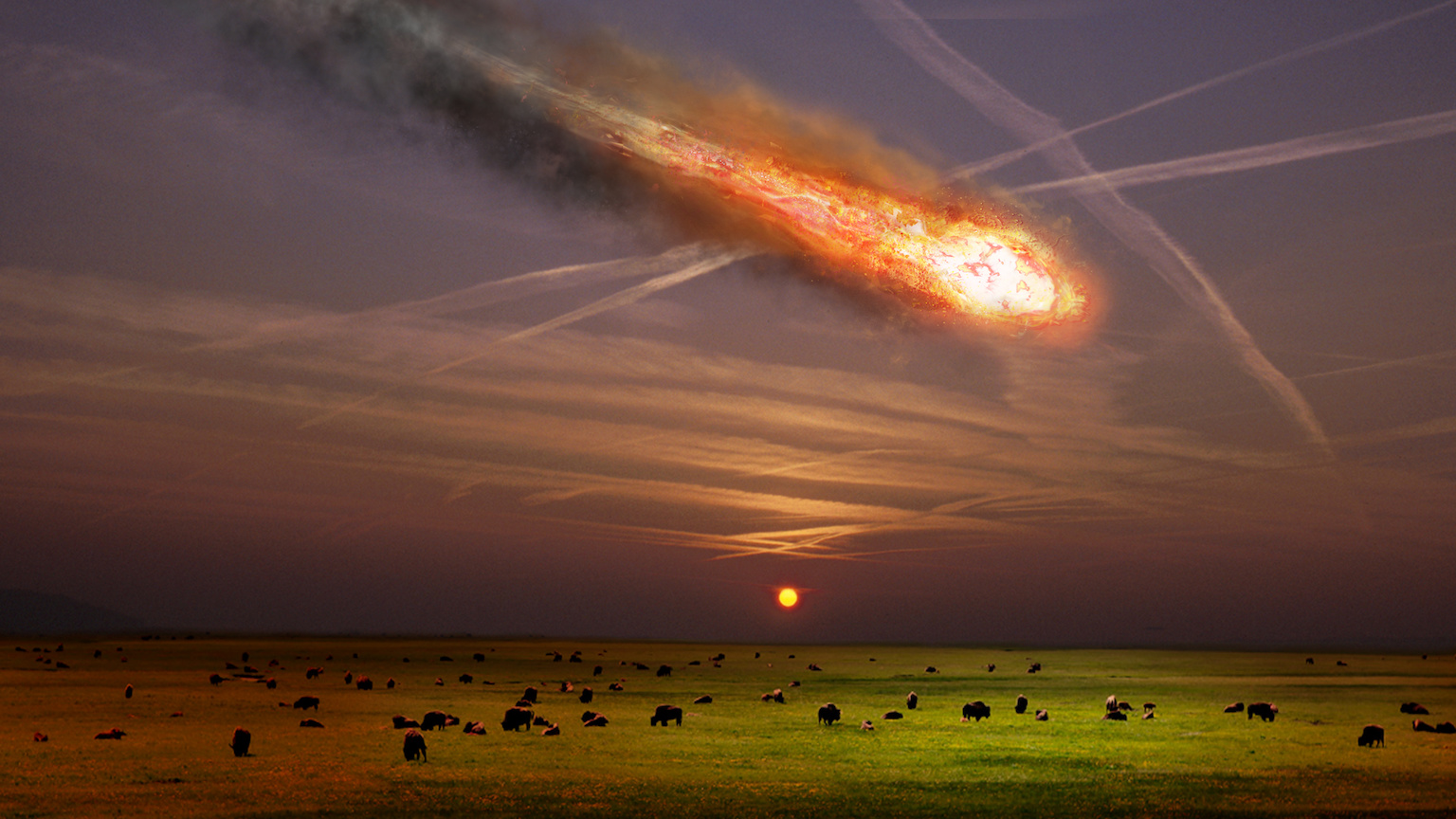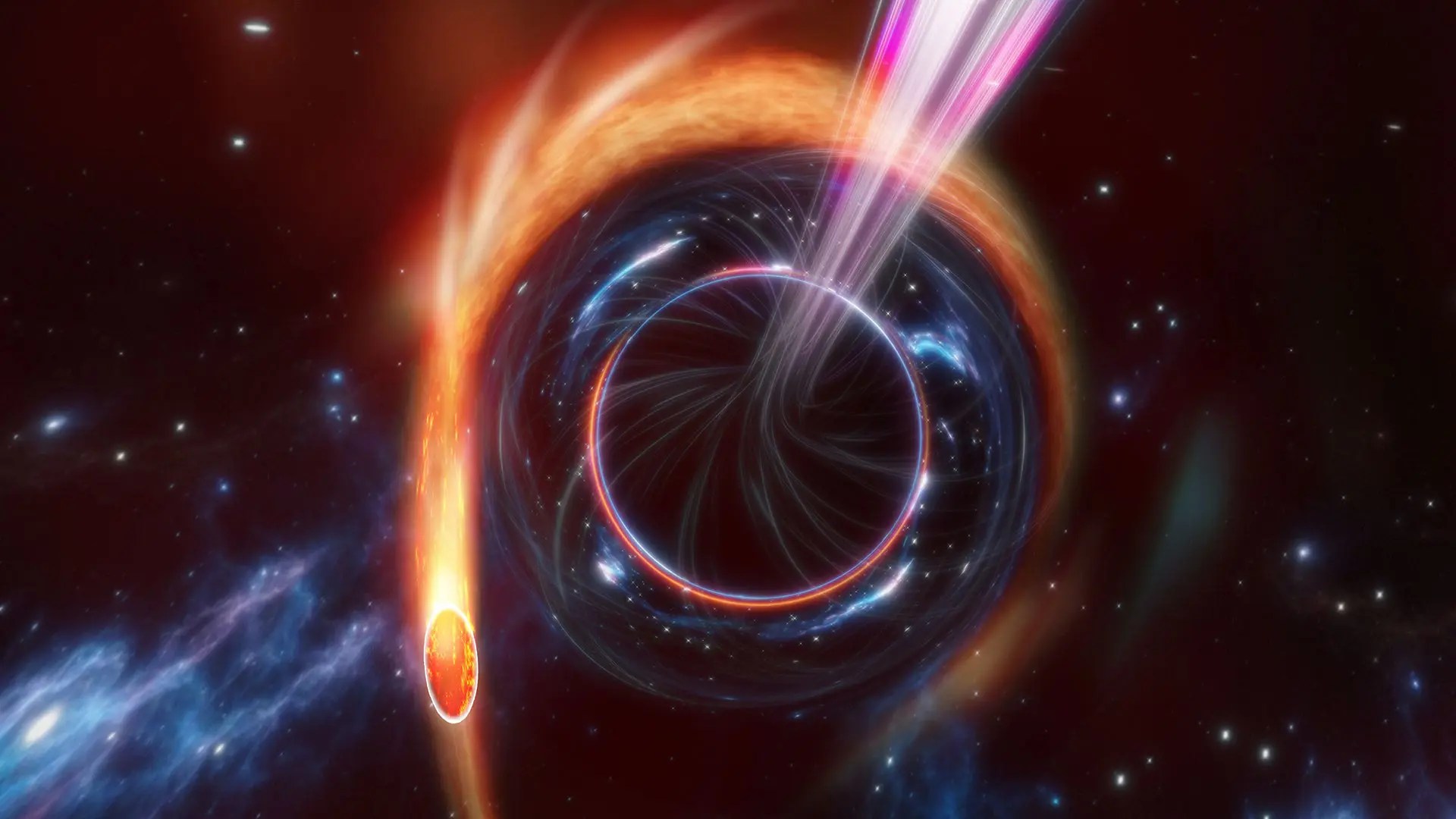Your guide to 2024’s Perseid meteor shower
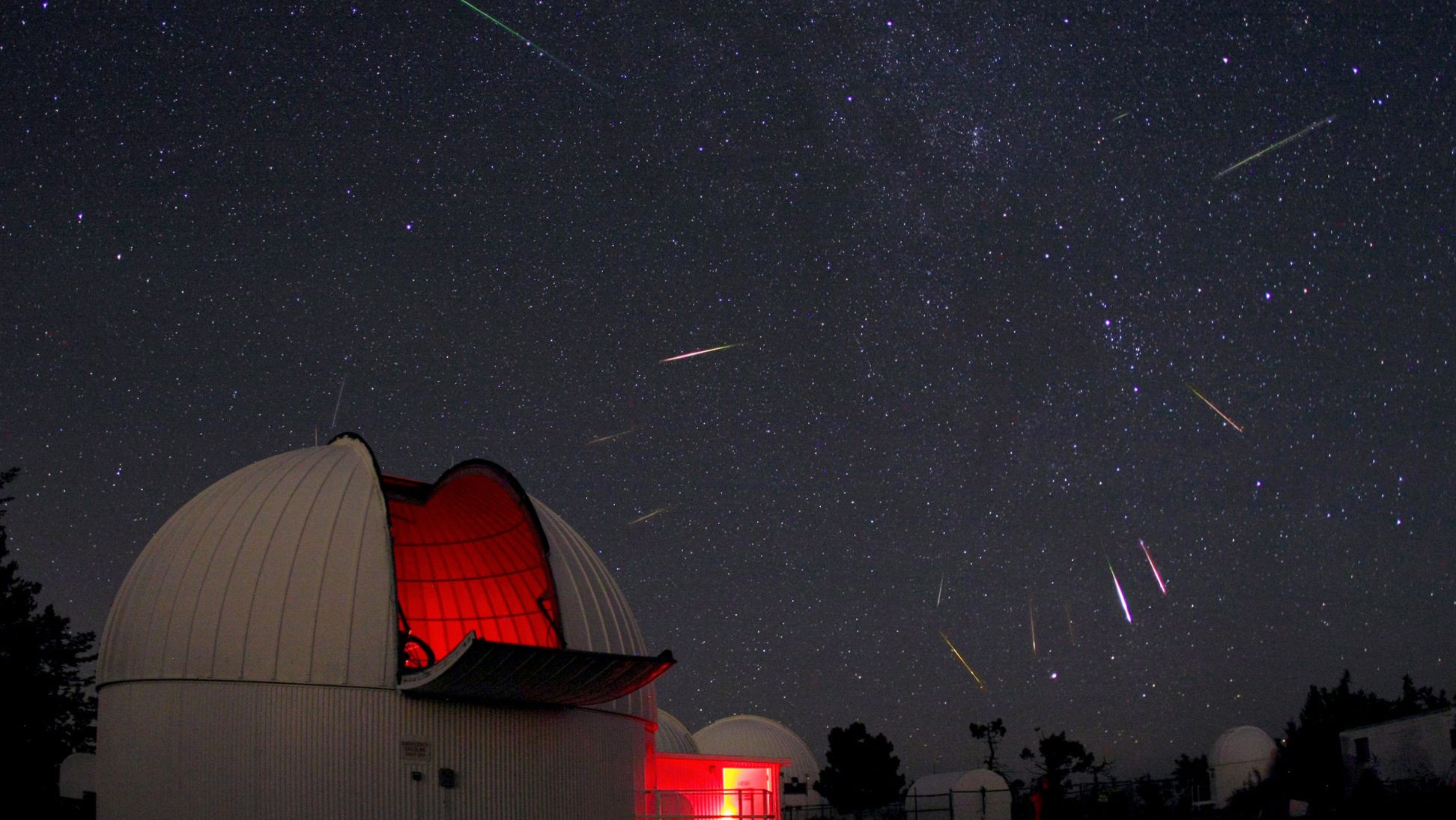
- On the nights of August 11th and 12th, the Perseid meteor shower reaches its peak, as Earth passes through the debris stream of Comet Swift-Tuttle.
- Although a waxing crescent moon will accompany it, the meteor shower reaches its peak shortly after midnight: right as the moon is setting, making for near-ideal viewing conditions.
- Even though the Perseids are presently weakening year-after-year, this year’s show should be filled with many bright streaks of light, perfect for the viewing pleasure of anyone with clear skies.
Every year in August, the night sky comes alight with meteors, as planet Earth plows through the debris stream of Comet Swift-Tuttle, giving rise to the Perseid meteor shower. Because of Swift-Tuttle’s large, massive size and the fact that it’s been in its present orbit for thousands of years, it’s produced an impressively large debris stream. The fact that Swift-Tuttle travels very far from Earth, as it has an orbital period around the Sun of 133 years (nearly twice as long as Halley’s comet), means that the debris moves very rapidly with respect to Earth. And the fact that Swift-Tuttle is also a potentially hazardous object to Earth — one that crosses Earth’s orbits nearly perfectly — means that each year, as Earth passes through its debris stream, the meteor shower that it puts on is spectacular.
The Perseid meteor shower is reliably Earth’s greatest annual show, with around 100 meteors-per-hour at its peak and where most of the meteors are fast-moving, with a lot of kinetic energy, results in a bright, luminous show from practically anywhere on Earth with clear skies. Although the Moon can often get in the way, this year, on the night of August 11th and the morning of August 12th, a waxing crescent moon will set shortly after midnight, paving the way for a spectacular nighttime show. If you have clear skies, you won’t want to miss 2024’s Perseids, which just might turn out to be the best meteor shower of the year.

It’s very rare for a large body like a comet or asteroid to pass close to planet Earth, although it does happen on occasion. What’s quite common, however, is that Earth will pass through the orbital path traced out by a periodic comet or asteroid that does enter the inner Solar System. When it does, depending on multiple factors, including:
- how long that object has been in its present orbit,
- how close Earth passes to that object’s orbital path,
- where the Moon is located,
- and how close the comet nucleus is to planet Earth,
we’ll get anywhere from a dud of a meteor shower to a spectacular show.
Fortunately (for now), for skywatchers all across Earth, all of these things line up favorably for August’s Perseids. The parent body, Comet Swift-Tuttle, has been in its present orbit for at least some 2000 years, as the Perseid meteor shower was first observed in the year 69 BCE. Even though Swift-Tuttle itself wasn’t discovered until 1862, and even though the comet’s nucleus is presently some 42 times the Earth-Sun distance away — farther than Neptune by far — the comet itself is so massive and has been orbiting the Sun for so long that the entirety of its orbit is densely populated by debris. Whenever Earth passes through it, a reliably spectacular show ensues.
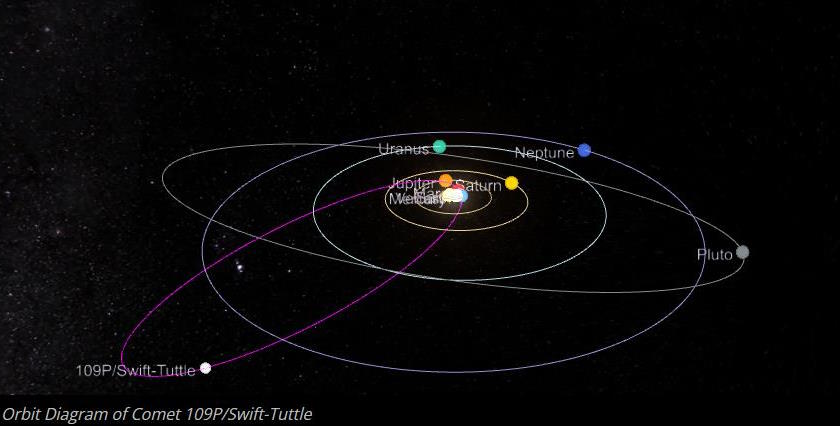
There’s another bonus to Comet Swift-Tuttle that’s widely known, but that’s rarely discussed: its orbital path takes it directly through Earth’s orbit around the Sun. With such a large aphelion, or farthest distance from the Sun, Comet Swift-Tuttle achieves orbital speeds of ~60 km/s relative to Earth whenever it passes through the inner Solar System. At an incredibly large size for a comet, with a nucleus that’s approximately ~26 kilometers in diameter, it’s been called the single most dangerous object known to humanity, as an unfortunate strike would release more than 20 times the amount of energy than the impact event that led to Earth’s most recent mass extinction event: the Chicxulub impactor.
Even though Swift-Tuttle takes a little more than 133 years to complete a single orbit around the Sun, each time it makes a close pass through the inner Solar System, it undergoes the following changes.
- It heats up, driven by radiation from the Sun.
- It gains two tails: a dust tail, which traces out a curved shape, and an ion tail, which always points directly away from the Sun.
- Tiny fragments of the comet’s nucleus break off, continuing in the same orbit as the parent body, but getting stretched out ahead of and behind the comet itself.
- And, over time, this creates a dense debris stream, leading to a meteor shower each time Earth passes through the comet’s orbit.

In other words, as long as the comet’s nucleus and planet Earth itself don’t intersect in orbit — the recipe for a collision — the only effect this comet will have on Earth is through its debris stream. As Earth passes through that debris stream, and it will continue to do so with a peak arriving between August 11th-15th of each year for the foreseeable future, a series of meteors will appear to radiate from the same point in the sky during that time: a point that happens to be in the constellation of Perseus, which gives the meteor shower its name, the Perseids.
In the northern hemisphere, the shower is most spectacular, as the radiant of the Perseids is located in the northern skies. If you can find the Big Dipper, the North Star, and the famed “W” of the constellation Cassiopeia, it’s just a short journey through the skies to arrive at the invisible point-of-origin of all Perseid meteors. Although they originate from that point, the best way to watch them is to lay back or sit back, take in a wide-field view of the sky, and look for meteors zipping away from that point-of-origin. They move so fast and shine so bright as they burn up in Earth’s atmosphere that they can literally appear anywhere, including even in the southern hemisphere!

That doesn’t mean that every meteor you see, mind you, will be a Perseid meteor. There are plenty of other comets and asteroids that have passed through Earth’s orbit in the past, as well as stray dust and micrometeoroid particles. The way you can tell whether a meteor is a Perseid meteor or not is by tracing back the streak of light that appeared and seeing whether it goes back to that point — the radiant — or not. Even during the peak of the Perseids, somewhere around 20% of the meteors that you see might arise from stray particles, rather than from Comet Swift-Tuttle itself.
In general, meteor showers are usually best viewed at around 3 AM or so, as that’s when the combination of dark skies and abundant meteors are maximized, coupled with the radiant typically being high in the sky and clearly visible above the horizon. This year, that will be amplified by the setting of the waxing crescent moon, which will occur between 1:30 AM and 2:20 AM on the morning of August 12th, right when the Perseids are peaking. As soon as the Moon is down, the skies will darken further, leading those meteors to truly “pop” against the backdrop of night. If you’re able to stay up late (or get up early), even though August 12th is a Monday, the peak of the Perseids is worth it wherever you have clear, dark skies.
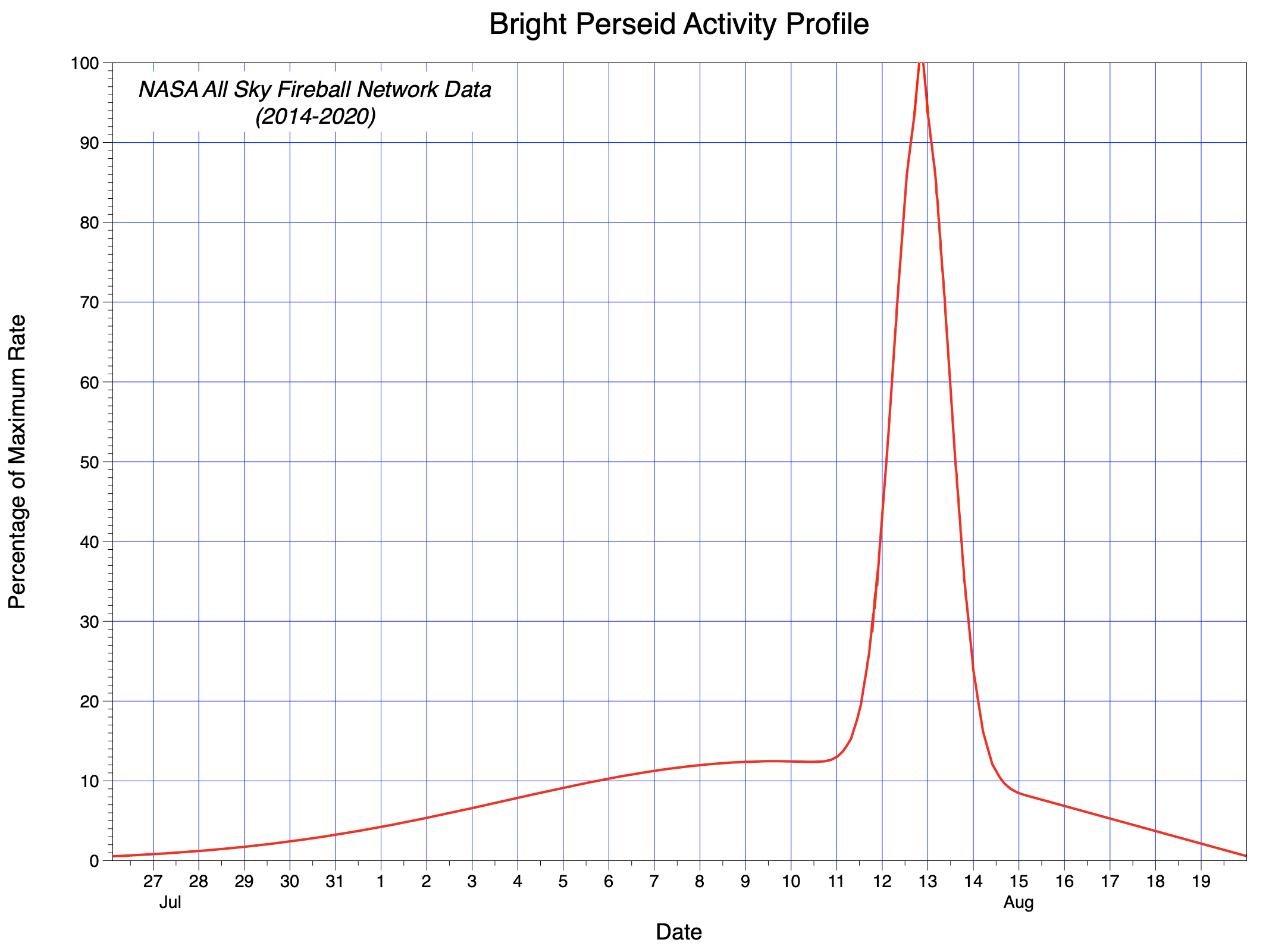
How many meteors can you expect to see? This is one of the toughest questions to answer, because there’s a big difference between the theoretical maximum rate of a meteor shower — what’s known as the zenith horizon rate (ZHR) — and what a typical observer who seeks out darker-than-suburban skies is going to see.
The zenith horizon rate assumes ideal conditions:
- that the radiant is directly overhead from where you are,
- that your skies are clear, cloudless, and devoid of all human-caused light-pollution (including from low-Earth orbiting satellites),
- that your eyes are dark-adapted (meaning that you haven’t looked at any white light, including your cell phone, for at least 20 minutes),
- and that you’re seeing the absolute highest, central peak of the shower, which lasts for only a few hours, rather than the broader “maximum” time you’ll be looking, which is related to where you are, locally, on Earth.
Under those ideal conditions, you might see over 100 meteors per hour, or about two meteors per minute. But even under more realistic conditions, most observers can expect to see around 40 meteors per hour, or about two meteors per every three minutes. That’s still a great show, and easily worth it.
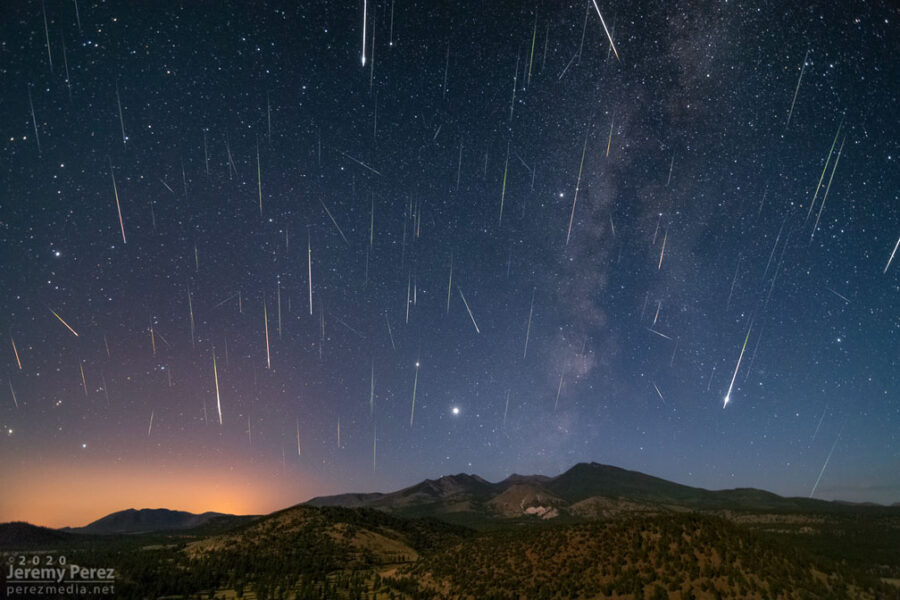
Each time that you catch one represents a moment to appreciate the cosmic story of how this meteor shower came to be. An ice-dominated object, left over from the formation of our Solar System more than 4.5 billion years ago, has recently been gravitationally perturbed, and now plunges through the inner Solar System once every 133 years, passing perilously close to Earth when it does. The planet Jupiter, as well as (to a lesser extent) the other planets, have been gravitationally affecting this comet, and will continue to do so in the future, perturbing its path. With each new orbit, a little bit more of the comet breaks off, reducing its mass ever so slightly.
In 2059, the Perseids will reach their weakest, as Swift-Tuttle achieves its farthest distance from the Sun. Then it will return, making another close approach into the inner Solar System in 2126. However, about 2400 years from now, after safely avoiding Earth for the next 17 full orbits, Comet Swift-Tuttle will experience a close gravitational pass near Jupiter: an event that will perturb its orbit. Then, in 4479, it will make its closest approach to Earth in recorded history, and even though the odds are low, there’s a non-zero chance that it will strike us. If it does, it will not only cause a mass extinction event, but all humans on Earth can expect to meet their demise.
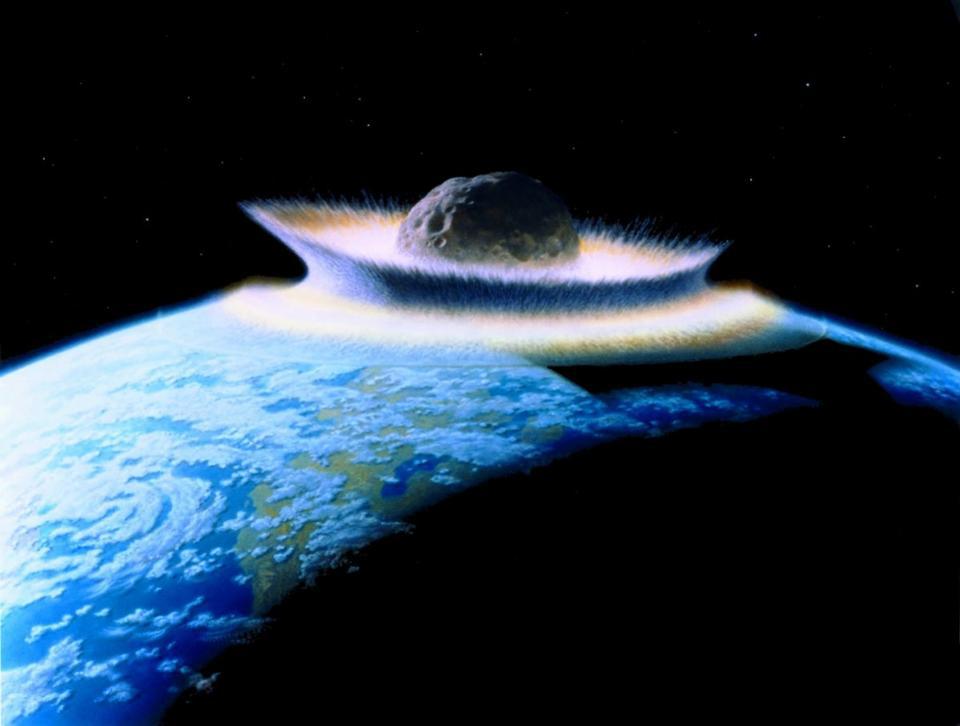
We have until then to build a sufficiently robust asteroid-and-comet deflection program, as this one object poses the most serious threat to Earth from all of the objects we can measure and track. Until that time, however, we’ll be able to thoroughly enjoy the annual sights that accompany the Perseid meteor shower. Many of us have unwittingly seen Perseid meteors already this year, as the debris stream of Comet Swift-Tuttle has grown to be very wide over the past several millennia. As a result, the Perseids last for more than a month: from mid-July until nearly the end of August.
However, the peak of the meteor shower is reserved for when the Earth passes through the midpoint of the debris stream, and that’s usually a one-or-two-night only show. This year, the night of August 11th (and the pre-dawn morning of August 12th) in most parts of the world, as well as the night of the 12th (and the pre-dawn morning of the 13th) in Asia and Australia, will mark the most spectacular peak, and is best observed after the Moon has set. As the debris particles from Comet Swift-Tuttle are moving quickly, at an estimated 58.3 km/s (130,000 mph), they’ll create some of the brightest meteors of any shower visible throughout the year.
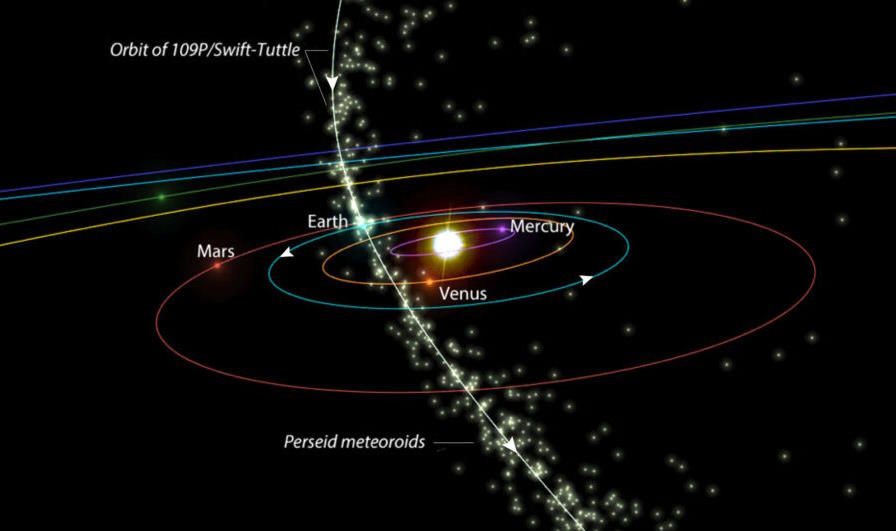
Even though the Perseids are getting weaker at present, down from its peak years of 1992 and 1993, which saw zenith horizon rates of over 200 meteors-per-hour (and, by some accounts, over 300 in 1993), they still remain a spectacular show. With peak rates in the ~60-100 per hour rate today, they’re well worth watching, particularly given warm temperatures, clear skies, and the pleasant experience of being outside. While the Perseids may not be quite as spectacular this year as they were 20 or 30 years ago, it’s still an excellent year to go out and take them in, particularly if you can find dark skies.
Each particle that strikes Earth’s atmosphere this year likely broke off of that comet centuries ago, and just happened to plow through Earth’s atmosphere above your head while you happened to be looking up.
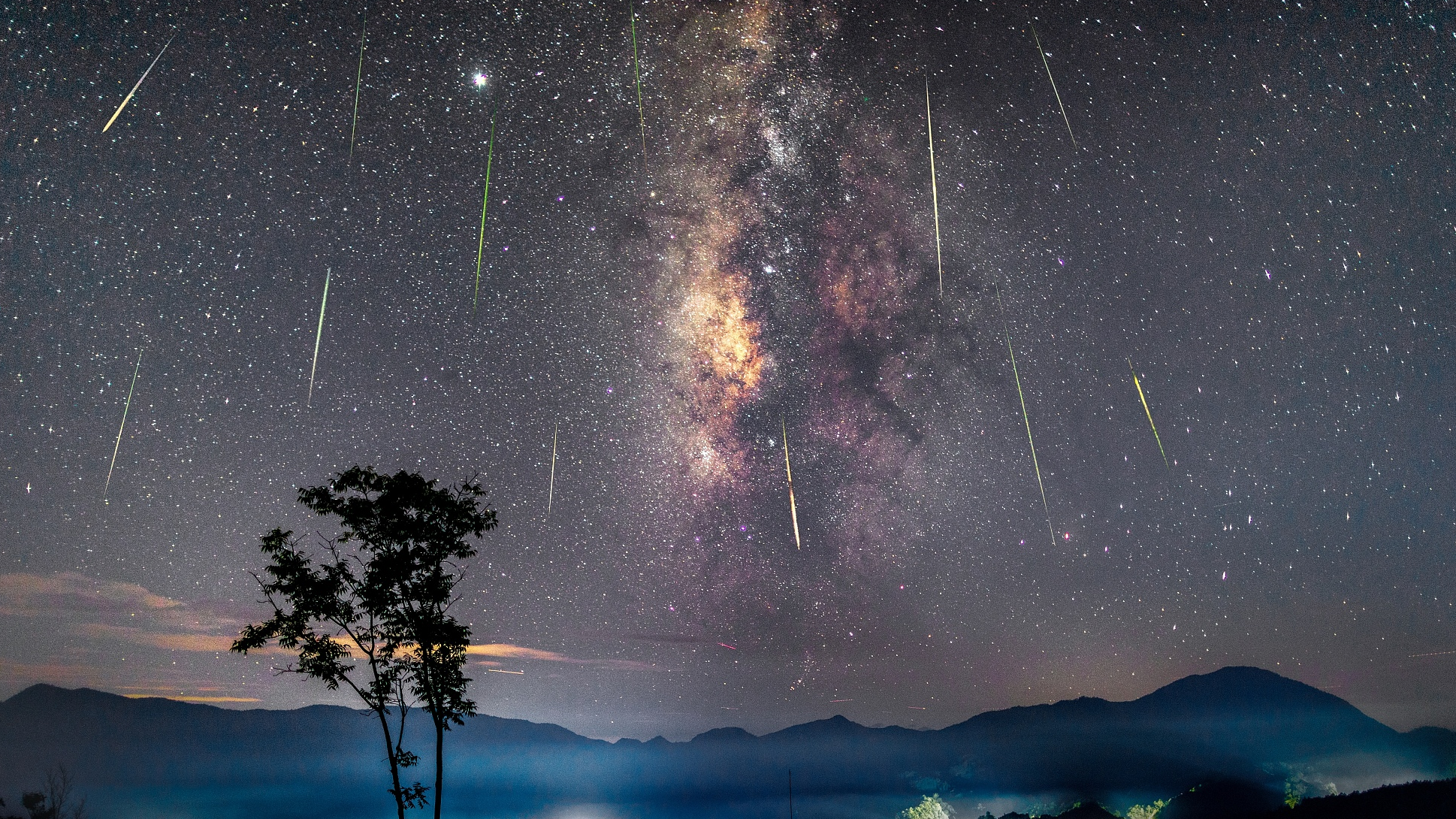
No more than a pebble’s worth of matter brilliantly caught fire in Earth’s atmosphere, producing a luminous streak that you and only a few thousand other humans likely saw. Swift-Tuttle was a stable Kuiper belt object for some ~4.5 billion years before experiencing a chance encounter that turned it into a periodic comet, and fragments of that comet are precisely what you’re seeing when you capture a Perseid meteor.
For each such particle, a journey that lasted billions of years ended in a mere fraction of a second. For each Perseid meteor that you were able to see, the culmination of that journey was the generation of photons from burning up in Earth’s atmosphere, and your eyes were the “camera” that caught them. Make your plans now for the second weekend in August, because a show like this only comes around once a year!
